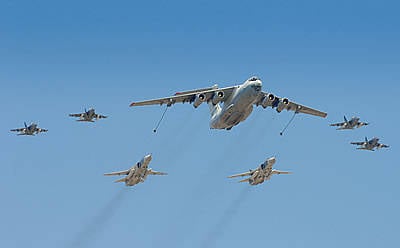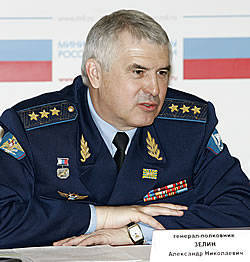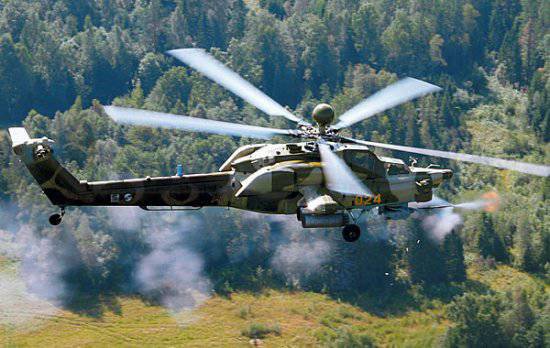The main trends of improving the technical equipment of aviation of the Air Force

In modern conditions, the Air Force solve a whole range of tasks to ensure the security of the country in peacetime and wartime.
In peacetime, the main ones are:
- carrying out combat duty by the established composition of air defense forces and aviation;
- control of airspace and protection of the state border in the airspace.
In wartime, the efforts of the Air Force will be aimed at:
- cover of objects from enemy strikes from the air;
- the conquest and retention of air superiority;
- defeat of land and sea enemy groups;
- defeat of strategic and operational reserves;
- violation of enemy communications;
- disorganization of military and state administration;
- the weakening of the military-economic potential of the enemy;
- operational transportation of troops, equipment and materiel and the landing of assault forces;
- conducting aerial reconnaissance.
At present, the Air Force includes aviation, anti-aircraft missile troops and radio-technical troops, which are the branches of the Air Force troops, as well as special troops, rear, and support and security units of military command and control.
Obviously, the ability of the Air Force to perform tasks for its intended purpose depends largely on the quality and quantity of the aviation equipment and weapons supplied to the troops.
 Alexander Nikolaevich ZELIN - Commander-in-Chief of the Russian Air Force, Colonel-General
Alexander Nikolaevich ZELIN - Commander-in-Chief of the Russian Air Force, Colonel-GeneralUnfortunately, for various reasons, for a number of years the supply of new aircraft to the Air Force was extremely small. At present, the situation has begun to change dramatically. If the Air Force bought one aircraft in 2007, two in the 2008, then more than 2009 in the 30. At the same time for the first time since the beginning of the 90-x. The Air Force received new fighters "MiG" - just three dozen
MiG-29MT and MiG-29UB. Two more new aircraft were delivered to the Air Force last year by the Sukhoi Company: December 19 to the Center for Combat Use and Retraining of Flight Personnel in Lipetsk from the NAPO Airfield with them. V.P. Chkalov in Novosibirsk flew a pair of regular Su-34. These cars are not yet included in the number of 32 new Su-34, which are built on NAPO under the five-year contract concluded at the end of December 2008, and complete the implementation of the protracted previous order. In addition, in 2009, the first serial production combat training aircraft of the new generation Yak-130 was built and delivered by the Air Force. From 2009, it was decided to resume the production of new Su-25CM aircraft in a double version, known as Su-25UBM.
To replace the Mi-24В (П) helicopters, which form the basis of the fleet of attack helicopters, new-generation helicopters Mi-28H “Night Hunter” and Ka-52 “Alligator” have already started to be used, providing round-the-clock and all-weather use in any physical geographical and meteorological conditions. They have more powerful weapons, providing selective destruction of objects in difficult tactical conditions. A special feature of the Ka-52 helicopter is its ability to use it for solving special tasks - transmitting information about the tactical situation in the area of combat operations, laser illumination of targets, as well as organizing communications and transmitting intelligence information. The Mi-28Н helicopter in 2009 was adopted by the Russian Ministry of Defense, and deliveries began. The Ka-52 helicopter is in the state joint testing (ICG) stage. According to the results of the preliminary conclusion of the GSI, work is underway to build the installation batch of Ka-52 helicopters. The first production vehicles of this type in March 2010 were received at the Combat Operational and Training Center for flight personnel in Torzhok. Serial deliveries of the Ka-52 helicopter are planned to begin with 2011.
It is planned to improve the system of training flight personnel for the helicopter structures of the Armed Forces of the Russian Federation by purchasing light training helicopters Ansat-U and Ka-60U. The Ansat-U helicopter completed all tests in 2008, and from 2009 it is serially supplied to the Air Force as a training machine. In 2009, the preliminary tests of the Ka-60U helicopter continued. In 2010, it is planned to transfer it to state joint trials.
A major achievement of last year was the conclusion by 18 of August of three government contracts for the supply of the Russian Air Force during the 2010-2015 period. A total of 64 Sukhoi brand new combat aircraft. Among them are 48 multifunctional super-maneuverable Su-35С fighters (delivery period - from 2010 to 2015), 12 upgraded Su-27СМ and four two-seater Su-30М2 (delivery period - until the end of 2011). Total for 2008-2009. long-term contracts were signed for the supply of 130 combat aircraft.
In the current 2010, more than 70 airplanes and helicopters are planned to be purchased for the needs of the Air Force.
In addition to the procurement of new aviation technology, the Air Force continues to work on the modernization of the technology of the system and the development of new promising models.
In the coming years, the Air Force will get into service a promising front-line aviation complex. Compared with the fighters of previous generations, the PAK FA has a number of unique features, combining the functions of a strike aircraft and a fighter. The fifth generation aircraft is equipped with a fundamentally new avionics complex, integrating the "electronic pilot" function, and a promising airborne radar with an active phased antenna array. This greatly reduces the load on the pilot and allows you to concentrate on the implementation of tactical tasks. The on-board equipment of the new aircraft allows real-time data exchange both with ground control systems and within the aviation group. The first flight of this aircraft occurred 29 January 2010 g. Now completed the first stage of testing. In their process, an assessment was made of the stability and controllability of the aircraft, the operation of the engine and the main systems, and the range of speeds and altitudes of the tests of the fighter were significantly expanded.
It is planned to assemble a modernized military transport aircraft, only externally similar to the honored “truck” IL-76 - “the 476 product”, which is a practically new car.
To meet the needs of the Air Force for re-equipping the BTA with new aircraft, it is planned to complete the development and begin procurement of light and medium military transport aircraft. To this end, a lightweight military transport aircraft of the new generation IL-112В is being developed, which, in comparison with its predecessor, will have enhanced capabilities for the transportation and landing of light models of weapons and military equipment. The first flight of the head Il-112В may take place in January-February 2011. To replace the An-12 aircraft, a promising medium military-technical cooperation is being developed, and the Air Force of the Republic of India showed interest in developing it.
It is planned to continue further joint work with Ukraine on the creation and conduct of tests of the operational-tactical military transport aircraft An-70.
An effective policy for the development and procurement of new aviation technology will not only ensure the re-equipment of Air Force aircraft, but will also give the necessary impetus for the development of basic competitive technologies, including aircraft construction and the creation of aircraft engines, will lead to the creation of new structural materials, the introduction of promising technologies, the development of machine park and technological equipment of industrial enterprises in the interests of the development of the most important sectors of the Russian economy.
Mi-28H helicopter in 2009 was adopted
Last year, the main efforts of the Air Force Command were focused on shaping the future appearance of the Air Force, increasing their combat capability and combat readiness, as well as ensuring access to the parameters of the number of military personnel established during peacetime.
In the future, the main goal of building an air force is to create a qualitatively new type of the Armed Forces of the Russian Federation. It should become the basis of the state’s aerospace defense system and be able, in cooperation with other types of the Russian Armed Forces, in peacetime to contain the potential aggressors and, in the military, to repel armed aggression with the entire arsenal of weapons.
The development of the Air Force lines (troops) - aviation, anti-aircraft missile and radio-technical troops - is planned to be carried out in the direction of improving the quality, level of their supply and manning, re-equipment of new and modernized weapons, military and special equipment, increasing the level of training and combat skills. crews and combat crews, the quality of combat and operational training of military units and air force formations.
In long-range aviation, the main emphasis will be placed on ensuring a given level of constant combat readiness of aviation SNFs, as well as improving forms and methods of operational and combat use.
In military transport aviation - to maintain capabilities for ensuring the inter-theater maneuver of troops (forces) and the landing of airborne assault forces.
In front-line aviation, to support and build up the combat capabilities of the existing aircraft fleet to perform the main tasks in peacetime and wartime, as well as creating and developing modern and promising multifunctional aviation systems in line units.
In the army aviation, the main directions of development of helicopters will be ensuring round-the-clock combat use, increasing the effectiveness of hitting ground targets, improving flight performance, improving survivability, navigation accuracy, and improving the noise immunity of communications equipment.
In the current and foreseeable conditions of the development of the military-political situation, the Air Force will play a decisive role in ensuring the military security of the Russian Federation both in peacetime and in wartime. The Air Force High Command will make every possible effort to strengthen the country's defense.

Information